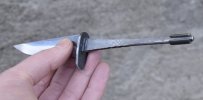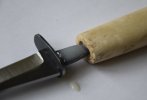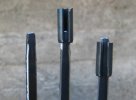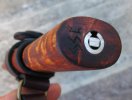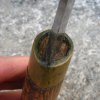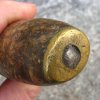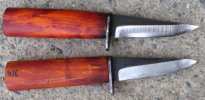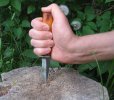- Joined
- Mar 27, 2013
- Messages
- 209
I got finished a new set of puukkos. I love to make a set of similar items. At this moment I make only one puukko model. Atraction toward serial production helps me to keep the price low, 95 USD with free international shipping, and also makes possible to field test every detail. I will soon show some photos of field tests of this puukko model, for instance, its super strong stick tang.
Blade: 80CrV2, 3", 1/8" (3.3 mm) double hardened (edge 63 HRC, spine 50 HRC), made by Lauri
Handle: 4", Curly Birch, stained, oiled by boiled linseed oil
Sheath: Veg tan leather, shellac hardened, beeswax greased, brass plated rivets are torch patinated
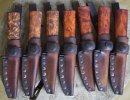
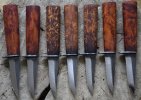
http://www.juhaperttula.com/
Blade: 80CrV2, 3", 1/8" (3.3 mm) double hardened (edge 63 HRC, spine 50 HRC), made by Lauri
Handle: 4", Curly Birch, stained, oiled by boiled linseed oil
Sheath: Veg tan leather, shellac hardened, beeswax greased, brass plated rivets are torch patinated


http://www.juhaperttula.com/

